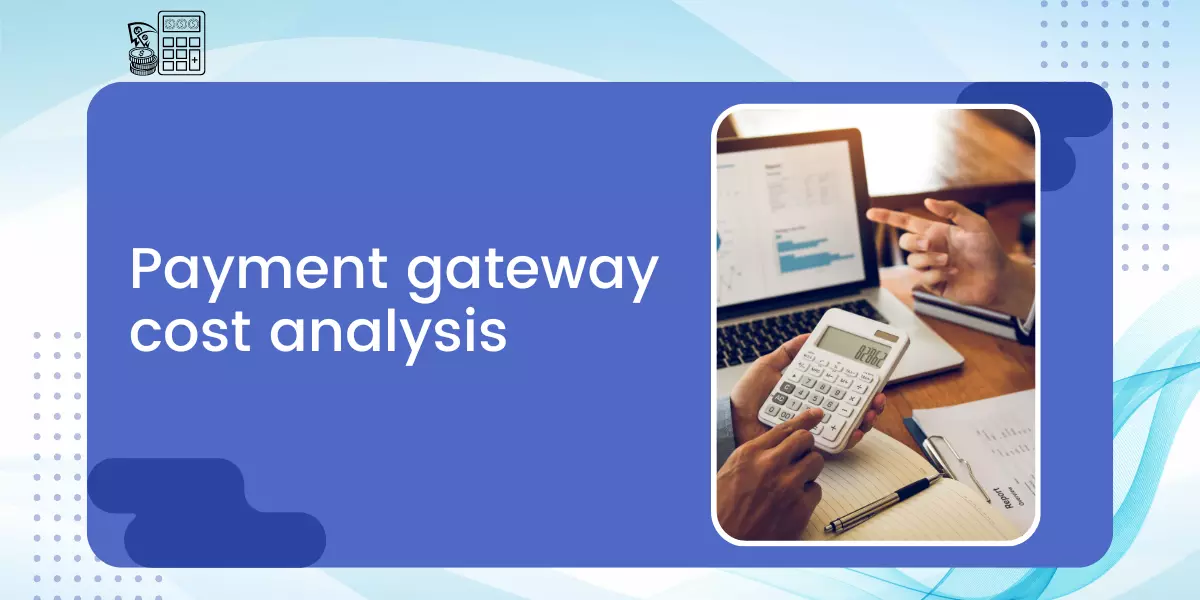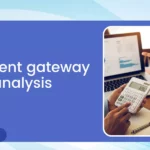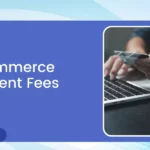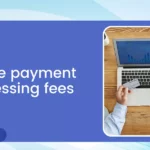Welcome to our comprehensive guide on “Payment Gateway Cost Analysis.” As businesses increasingly rely on digital transactions, understanding the costs associated with payment gateways is crucial for effective financial management. In this guide, we’ll delve deep into the factors contributing to the overall cost of using a payment gateway, empowering businesses to make informed decisions and optimise their payment processing strategies.
At the heart of our analysis lies the importance of transparency and accuracy in assessing payment gateway costs. With numerous fees, including transaction fees, monthly subscription fees, setup fees, and more, navigating the pricing structures of payment gateways can be daunting. However, armed with the right knowledge and tools, businesses can navigate through the complexities and identify cost-saving opportunities.
We’re excited to introduce our Stripe Fee Calculator tool to aid in this endeavour. This powerful tool allows businesses to estimate their transaction fees accurately using the Stripe payment gateway. By leveraging the Stripe Fee Calculator, businesses can gain valuable insights into their payment processing costs, enabling them to budget effectively and make strategic decisions.
Join us as we unravel the intricacies of payment gateway costs, providing you with the insights and resources you need to optimise your payment processing expenses and drive business growth. Let’s embark on this journey to dissect and analyze payment gateway costs, empowering you to take control of your financial success.
What are payment gateway fees?
Payment gateway fees encompass businesses’ costs for utilising payment gateway services, particularly for processing credit card transactions. These fees typically include transaction fees, setup fees, monthly subscription fees, and more.
1. Setup fees
Setup fees represent a one-time expense businesses incur upon establishing an account with a payment gateway. This fee encompasses the initial setup and integration of the payment gateway into the business’s sales system, ensuring seamless functionality and connectivity. It is an essential investment in laying the foundation for efficient payment processing operations.
2. Transaction fees
Transaction fees are levied by payment gateways for processing each transaction. These fees may comprise a fixed amount per transaction, a percentage of the sale amount, or a combination of both. They compensate the gateway for facilitating the transaction processing efficiently and securely.
3. Monthly fees
Monthly fees are recurring charges imposed by certain payment gateways, irrespective of transaction volumes. Businesses pay these fees periodically to maintain access to the gateway’s services, ensuring continued support and functionality for processing payments.
4. Chargeback fees
Chargeback fees are incurred by businesses when a customer disputes a charge, leading to the reversal of a transaction. This fee compensates for the administrative efforts to handle the dispute process effectively, including investigation and resolution activities.
5. Refund fees
Refund fees are charges levied by some payment gateways when a business issues a refund to a customer. This fee encompasses the expenses of returning funds to the customer, covering administrative and processing costs incurred during the refund process.
6. PCI compliance fees
PCI compliance fees are charges imposed by payment gateways to ensure compliance with the Payment Card Industry Data Security Standard (PCI DSS). Businesses handling credit card transactions must adhere to these security standards, and some gateways may levy a fee to cover the costs associated with maintaining PCI compliance, including security audits and assessments.
7. Termination fees
Termination fees are charges incurred by businesses when they prematurely cancel their account with a payment gateway before the contract term ends. This fee compensates the gateway for the early termination of the service agreement and any associated administrative or contractual costs.
8. Miscellaneous fees
Miscellaneous fees encompass additional charges imposed by payment gateways for supplementary services beyond standard transaction processing. These fees may include charges for international transactions, currency conversion, or premium services like advanced fraud protection. The specific fees and services offered can vary among payment gateways, so businesses must carefully review their fee structures.
Different payment gateways offer varying fee structures, and businesses often choose a service based on how these costs align with their sales volume and business model. Some gateways may have lower transaction fees but higher monthly fees, making them ideal for high-volume businesses. Conversely, others may charge no monthly fee but higher transaction costs, suiting businesses with lower sales volumes.
A careful review of these fees is crucial for businesses to identify the most cost-effective solution for their needs. By understanding their transaction volume and business model, they can select a payment gateway that optimises costs while providing the necessary features and support for seamless payment processing. Making an informed decision about payment gateway selection can significantly impact a business’s bottom line and overall financial performance.
Stripe’s payment gateway fees
Stripe’s payment gateway fees encompass a transparent and straightforward pricing structure designed to support businesses of all sizes. Here’s a breakdown of the fees charged by Stripe for various payment processing services:
- Transaction fees: Stripe charges 2.9% + 30¢ for successful card charges. Additional fees apply for specific scenarios, including manually entered cards (0.5%), international cards (1.5%), and currency conversion (1%).
- ACH direct debit: For ACH direct debit transactions, Stripe charges 0.8% with a cap of US$5.00 per transaction.
- Additional payment methods: Fees for payment methods like iDEAL start at 80¢ per transaction.
- 3D Secure authentication: Stripe offers this security feature for a fee of 3¢ per 3D Secure attempt for accounts with custom pricing.
- Card account updater: Stripe automatically updates expired or renewed card information for saved customers, charging 25¢ per update for accounts with custom pricing.
- Machine learning models for authorisation: Stripe includes machine learning models to enhance authorisation rates, charging 0.08% per successful card charge for accounts with custom pricing.
- Instant payouts: Stripe provides instant payouts for 1% of the payout volume, with a minimum fee of 50¢.
- Dispute charges: Stripe charges US$15 per dispute, a chargeback fee.
Importantly, Stripe does not impose setup or monthly fees, ensuring transparency and simplicity in its standard pricing model.
Comparison of Payment Gateway Fees: Stripe vs. PayPal
When comparing the fee structures of Stripe and PayPal, several key differences emerge:
1. Stripe
- Setup fees: None.
- Transaction fees: 2.9% + 30¢ for successful card charges.
- Monthly fees: None.
- Chargeback fees: US$15 per dispute.
- Refund fees: The original transaction fee has not been refunded.
- Instant transfer fees: 1% of transfer volume with a minimum fee of 50¢.
- Payout fees: 1% of payout volume with a minimum fee of 50¢.
2. PayPal
- Setup fees: None.
- Transaction fees: Range from 2.99% + 49¢ to 3.49% + 49¢.
- Monthly fees: Varying monthly fees for certain services.
- Chargeback fees: US$20, waived with chargeback protection (additional fees apply).
- Refund fees: The original transaction fee has not been refunded.
- Instant transfer fees: 1.5% of transfer value with a minimum fee of 50¢.
- Payout fees: 2% per transaction via spreadsheet or 25¢ per payment via API.
In direct comparison, Stripe’s fee structure is simpler with no monthly fees or setup fees. PayPal, on the other hand, offers a more complex fee structure with varying transaction fees and additional monthly fees for certain services. Businesses should carefully evaluate these differences to determine the most suitable payment gateway.
Analysing Your Payment Gateway Costs
In “Analyzing Your Payment Gateway Costs,” we dissect the various fees associated with payment gateways like Stripe and PayPal. From transaction fees to setup charges, we delve into the nuances of each cost element, providing businesses with valuable insights to optimise their payment processing expenses. Understanding these costs is paramount for effective financial management, ensuring businesses can select the most cost-effective payment gateway for their operations.
1. Identifying Your Transaction Mix
Understanding your transaction volume and average transaction value is paramount in payment gateway cost analysis. This data provides insights into your transaction mix, allowing for accurate cost assessment.
By knowing the volume and value of transactions processed, businesses can identify trends, evaluate fee structures, and optimise their payment processing expenses effectively. This understanding ensures that businesses can select the most suitable payment gateway and pricing plan tailored to their transaction patterns, ultimately maximizing cost efficiency and profitability.
2. Projecting Future Costs
Businesses should consider potential future growth when evaluating payment processing costs. Projecting future transaction volumes and values allows businesses to anticipate how growth may impact their payment gateway expenses.
By forecasting increased transaction volumes or changes in transaction mix, businesses can proactively assess whether their current payment gateway and fee structure will remain cost-effective in the long term.
This forward-thinking approach enables businesses to make informed decisions and select payment processing solutions that can scale with their growth, avoiding unforeseen cost escalations and ensuring sustainable financial management.
Cost Optimization Strategies
Cost optimisation strategies involve minimising expenses associated with payment processing. One effective approach is negotiating lower transaction fees with payment processors based on your business volume. By showcasing a high transaction volume or potential growth, businesses can leverage their bargaining power to secure more favourable fee structures.
This may include discounted transaction rates or reduced flat fees, resulting in significant long-term cost savings. Negotiating lower transaction fees aligns with the goal of maximizing profitability and ensuring efficient financial management.
1. Negotiating with Payment Processors
Negotiating with payment processors offers businesses an opportunity to potentially lower transaction fees, leveraging their transaction volume as leverage. By demonstrating a significant volume of transactions or potential for growth, businesses can initiate discussions with payment processors to secure more favourable fee structures.
This negotiation process may involve negotiating discounted transaction rates or reduced flat fees, ultimately resulting in substantial cost savings over time. Successfully negotiating lower transaction fees not only enhances profitability but also aligns with the objective of effective financial management, allowing businesses to optimise their payment processing costs to support long-term growth and success.
2. Exploring Alternative Payment Methods
Exploring alternative payment methods, such as ACH transfers, presents businesses with an opportunity to potentially reduce transaction fees for specific situations. While credit card transactions often incur higher fees, ACH transfers typically have lower processing costs.
By diversifying payment options and encouraging customers to use methods with lower fees, businesses can mitigate overall payment processing expenses. Additionally, ACH transfers offer advantages like faster processing times and reduced risk of chargebacks, making them an appealing option for certain transactions. Evaluating alternative payment methods alongside traditional options enables businesses to optimise their payment processing strategies and minimise costs effectively.
3. Choosing the Right Payment Gateway
Choosing the right payment gateway is paramount for businesses, as it directly impacts both functionality and cost efficiency. It’s essential to select a gateway that aligns with your business needs and cost structure to maximize benefits. Consider factors such as transaction fees, setup costs, and additional features offered by different gateways.
By choosing a gateway that suits your transaction volume, business model, and budget, you can optimise payment processing costs while ensuring seamless transactions and excellent customer experiences. Making an informed decision about your payment gateway not only enhances cost efficiency but also contributes to overall business success and growth.
Conclusion
conducting a thorough payment gateway cost analysis yields valuable insights for businesses seeking to optimize their financial management. Key takeaways include the significance of understanding transaction volumes and average transaction values, which provide essential data for accurate cost assessments.
Additionally, projecting future costs enables businesses to anticipate growth and ensure their chosen payment gateway can scale accordingly. Negotiating lower transaction fees based on business volume and exploring alternative payment methods are effective cost-optimization strategies to consider.
However, it’s crucial to remember that payment gateway costs extend beyond transaction fees alone. Other factors, such as setup fees, monthly charges, and additional service fees, can significantly impact overall expenses.
Therefore, it’s essential to consider all cost aspects comprehensively when selecting a payment gateway. By carefully evaluating these factors and choosing a gateway that aligns with business needs and cost structures, businesses can optimise their payment processing costs while maintaining efficiency and profitability in the long term.
FAQs about Stripe Payment Gateway
How much does it cost to set up a Stripe payment gateway?
Stripe does not charge any setup fees for using its payment gateway.
How much does a payment gateway cost?
Payment gateway costs vary depending on the provider. Stripe typically charges a percentage fee plus a fixed amount per transaction.
How much does Stripe take per payment?
Stripe charges 2.9% + 30¢ for each successful card charge.
Is Stripe cheaper than PayPal?
Stripe and PayPal have different fee structures, making one cheaper than the other depending on transaction volume and specific needs.
Does Stripe work in India?
Yes, Stripe supports businesses in India in accepting online payments.
Is Stripe payment gateway free?
Stripe does not charge setup or monthly fees, but transaction fees apply for each payment.
Which payment gateway is the cheapest?
The cost-effectiveness of a payment gateway depends on factors like transaction volume, average transaction size, and specific business needs.
Does Stripe support UPI?
Yes, Stripe supports UPI payments for businesses operating in India.
How is the Stripe fee calculated?
Stripe’s fee is calculated as a percentage of the transaction amount plus a fixed fee per transaction.
Is Stripe cheaper than Square?
The cost comparison between Stripe and Square depends on various factors, including transaction volume, type of business, and specific payment processing needs.
Who owns Stripe?
Stripe was co-founded by brothers Patrick and John Collison, who own and operate the company.
What is the minimum charge on Stripe?
There is no minimum charge on Stripe; transaction fees apply based on the amount of each payment processed.
What is better than Stripe?
There are various payment gateways available, each with its features and pricing. The best choice depends on specific business requirements.
Is Stripe a good payment gateway?
Stripe is widely regarded as a reliable and efficient payment gateway, offering robust features, developer-friendly APIs, and competitive pricing for businesses of all sizes.










